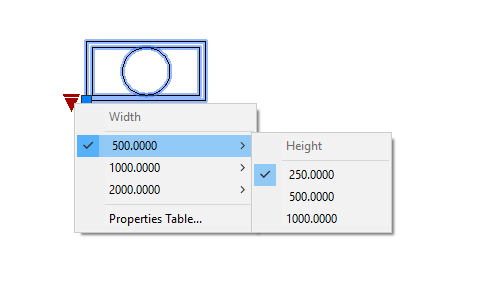Lookup tables associate parameter values for the dynamic block reference with other specified data (for example, a model or part number).
You can extract data from dynamic block references just as you would extract block attribute data.
When the parameter values in a dynamic block reference match a row of input property values in the lookup table, the corresponding lookup property values are assigned to the block reference. These lookup properties and values are displayed in the Properties palette under Custom.
Lookup tables support the following:
- All numeric parameter properties (for example, distance and angles for point, linear, polar, XY, and rotation parameters)
- Text string parameter properties (for example, flip and visibility parameter values)
Add Properties and Values to a Lookup Table
The Property Lookup Table consists of input properties and lookup properties.
- Input properties. Parameters. Each parameter can correspond to one column (except for lookup, alignment, and base point parameters). The parameter label is used as the property name.
- Lookup properties. Lookup parameters. Each lookup parameter can correspond to one column. The lookup parameter label is used as the property name.
To add values to the cells in each column, click a cell and enter a value. If you defined a value set for an input property (parameter) in the table, a drop-down list of available values will display. Make sure to follow the guidelines in the Lookup Table Value Reference.
Custom Values
In a lookup table that does not use value sets, parameter values that do not match a row of input property values from the lookup table are assigned the lookup property value that corresponds to <Unmatched>. The default value is Custom.
Enable Reverse Lookup
A lookup property with reverse lookup enabled adds a lookup grip to the dynamic block reference. When you click this grip, a drop-down list of that column’s lookup values is displayed. The corresponding input property values of the selected list item are assigned to the block reference.

To enable reverse lookup for a lookup property, each row in the lookup table must be unique. To check for errors and empty cells, in the Property Lookup Table dialog box, click the Audit button. You can also use the shortcut menu options to insert, delete, or reorder rows.